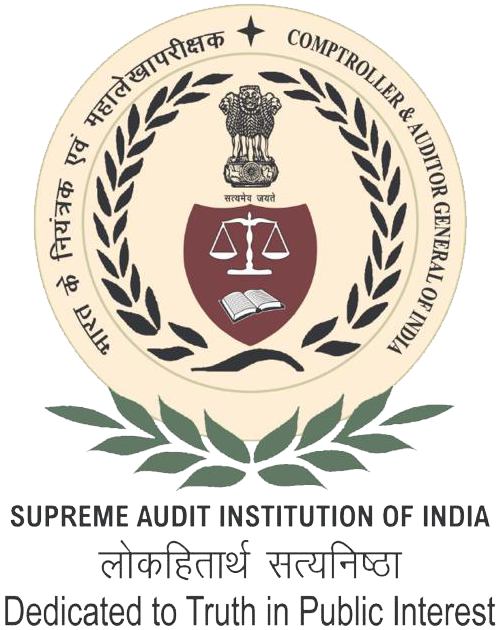- Home
- About Us
- Functions
- Administration
- Direct Taxes
- Indirect Taxes
- Central Autonomous Bodies
- Receipt Audit
- Welfare
- Publication & Reports
- Audit Reports
- PENSION ADALAT
- SIP
- SAR FORMAT
- PAC DOC
- PAC DOC INDEX
- PHARMACEUTICAL
- TAX ADMINISTRATION-1
- TAX ADMINISTRATION-2
- IT APPLICATION IN ITD
- IT APPLICATION IN ITD-2
- EXEMPTIONS-TO-CHARITABLE-TRUSTS
- HEALTH-AND-ALLIED-SECTOR
- PHARMACEUTICAL-2
- LOSS-OF-REVENUE-DUE-TO-SHORT-LEVY-OF-TAX
- EXPENDITURE-INCURRED-ON-INTEREST-ON-REFUNDS
- CONTRAVENTION-OF-CONSTITUTIONAL-PROVISIONS
- ITRA
- COMPENDIUM OF IT
- NATIONAL ONLINE ESSAY WRITING COMPETITION
- EVENTS
- Media Section
- Photo Gallery
- Video Gallery
- CRICKET TOURNAMENT

- ANNUAL DAY CELEBRATION

- INAUGURATION OF STATUE OF BHARATRATNA BABASAHEB AMBEDKAR
- Meeting on Merger and Acquisition 1
- Meeting on Merger and Acquisition 2
- Dr. Babasaheb Ambedkar Death Anniversary 06.12.2022 vdo-1
- Dr. Babasaheb Ambedkar Death Anniversary 06.12.2022 vdo-2
- Dr. Babasaheb Ambedkar Death Anniversary 06.12.2022 vdo-3
- Republic day 2023
- CRICKET TOURNAMENT
- Media Section
- Working with Us
- Employee Corner
- Rajbhasha
- Circulars
- Cicular-9-2022
- circular-no-5-2021
- Circular-No-10-2022
- circular-14-2022
- Circular-no-12-2022
- Notification-90-2022
- Notification-91-2022
- Notification-92-2022
- Notification-93-2022
- Notification-5-dated-29-7-2022
- Notification-86-2022
- Notification-no-69-2022
- Notification-no-73-2022
- Notification-no-74-2022
- Residency-circular-02-of-2021
- Circulars regarding Air Travel Booking.
- TOURS
- FORMS
- Form-Prior-intimation-or-approval-in-respect-of-immovable-property-
- Proposal-for-approval-of-funds-for-expenditure
- Fortnightly-report
- Revised-format-for-application-of-leave
- Taking-over-of-charge-statement
- reimbursement-claim-for-briefcase-bilingual
- BILINGUAL-MEDICAL-CLAIM-FORMAT
- reimbursement-formCGHS-Form-Bilingual
- LTC-ADVANCE
- TA-Bill-on-tour
- Newpaper-reimbursement-form-bilingual
- Travelling-Allowance-Bill-for-Transfer
- TA-Tour-Advance
- LTC-ADVANCE-bilingual
- CEA-bilingual
- Form-3-continuation
- NOC-For-obtaining-passport
- DCRG-FORM
- Computer-advance
- GPF-nomination-form
- Hometown-declaration
- SAS-application-form
- Private-visit-abroad-bilingual
- Renovation-of-house
- Permission-for-construction
- Application-to-attend-exam-course
- Application-for-withdrawl-from-GPF-account
- Provident-fund-advance-form
- Group-Insurance-Form-No-08
- From-3-details-of-family
- Form-1-and-2-english
- Death-Cum-Retirement-Gratuity
- Medical-leave-form-bilingual
- Immovable-property
- Reimbursement-claim-for-briefcase-bilingual
- QUARTERLY REPORT
Audit Reports
Performance

Civil
Report No. 21 of 2011 – Performance Audit of Water Pollution in India of Union Government, Ministry of Environment and Forest
Date on which Report Tabled:
Fri 16 Dec, 2011
Date of sending the report to Government:
Government Type:
Union
Union Department
Civil
Sector
Environment and Sustainable Development
Overview
In July 2009, various stakeholders working in the field of environment flagged water pollution as the most important environmental issue that concerns us. We also held a detailed two-day International Conference on Environment Audit - Concerns about Water Pollution in March 2010. This conference was attended by various civil society organisations, government agencies, international agencies and regulatory bodies. The heads of Supreme Audit Institutions from Austria, Bhutan, Maldives and Bangladesh also shared their concerns about water pollution. The Conference flagged many important areas of concern with regard to river, lake and ground water pollution. Further, we put out advertisements in various national and local newspapers all across India, inviting suggestions from the general public regarding the water pollution problems faced by them. Based on feedback from these consultations, we decided to take up a Performance Audit of Water Pollution in India during 2010-11.
Most lakes in India are under threat from nutrient overloading which is causing their eutrophication and their eventual choking up from the weeds proliferating in the nutrient-rich water. Implementation of NLCP in conserving these lakes has had no discernible effect.Pichola, Pushkar, Dimsagar, Banjara, Kotekere, Bellandur, Veli Akkulam, Shivpuri, Powai, Rankala, Twin lakes, Bindusagar, Mansagar, Mansiganga,Rabindra Sarovar, Mirik, Kodaikanal lake, Dal lake, Durgabari lake,Laxminarayanbari Lake, Dimsagar Lake etc., have shown poor water quality.However, there have been some success stories like Nainital lake, Kotekere lake, Sharanabasaveshwara lake and Mansagar where water quality has improved after completion of conservation programmes.
River cleaning and control of pollution programmes for our polluted rivers are being implemented since 1985. The programmes seek to address pollution from point and non-point sources through construction of Sewage Treatment Plants, low cost sanitation, electric crematoria etc. However, the data on the results of these programmes are not very encouraging.Ganga in certain stretches, Yamuna, Gomti, Godavari, Musi, Cauvery,Cooum, Mahananda, Khan, Kshipra, Vaigai, Chambal, Rani Chu, Mandovi,Sabarmati, Subarnarekha, Bhadra/Tungabhadra, Pennar, Pamba, Betwa,Krishna, Sutlej etc., continue to be plagued by high levels of organic pollution, low level of oxygen availability for aquatic organisms and bacteria, protozoa and viruses which have faecal-origin and which cause illnesses.
Download Audit Report
- Preface
- Executive Summary
- Chapter 1 – Introduction
- Chapter 2 - Legislative, policy and Institutional Framework
- Chapter 3 - Planning for control of pollution of rivers, lakes and ground water
- Chapter 4 - Implementation of programmes for control of pollution of rivers, lakes and ground water
- Chapter 5 - Monitoring of programmes for control of pollution of rivers, lakes and ground water
- Chapter 6 - Results of programmes for control of pollution in India
- Chapter 7 – Resources and Utilisation of Funds
- Chapter 8 – State specific findings
- Chapter 9 – Conclusions
- Annexures

